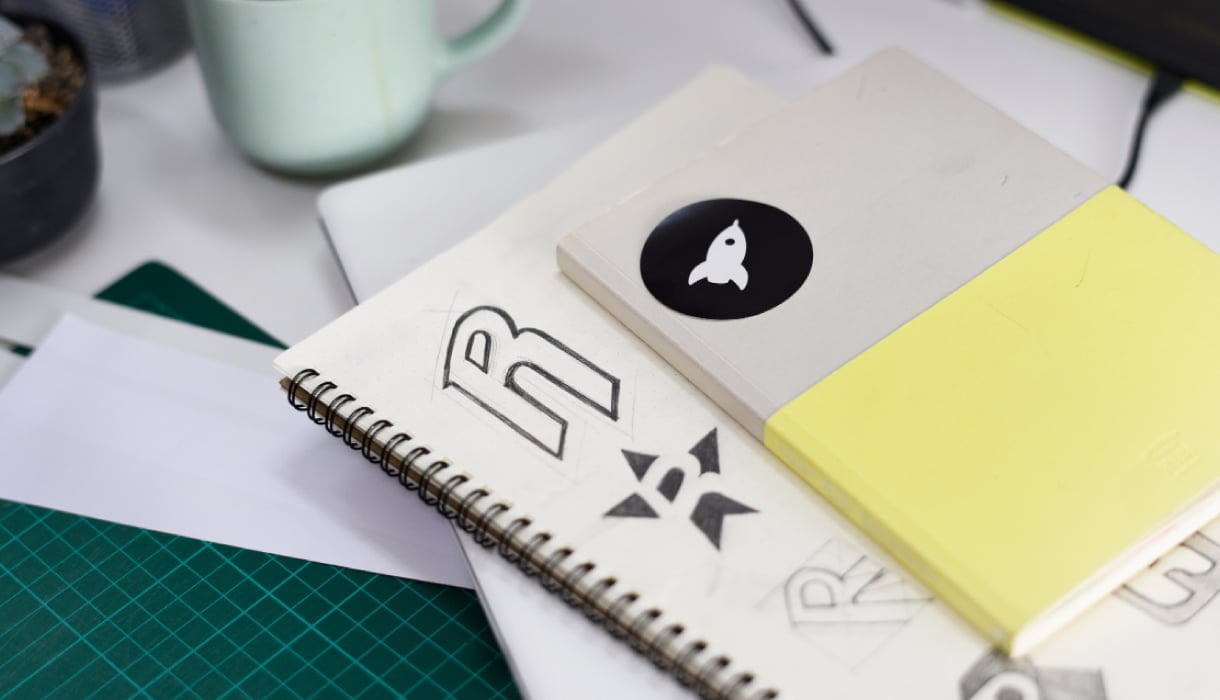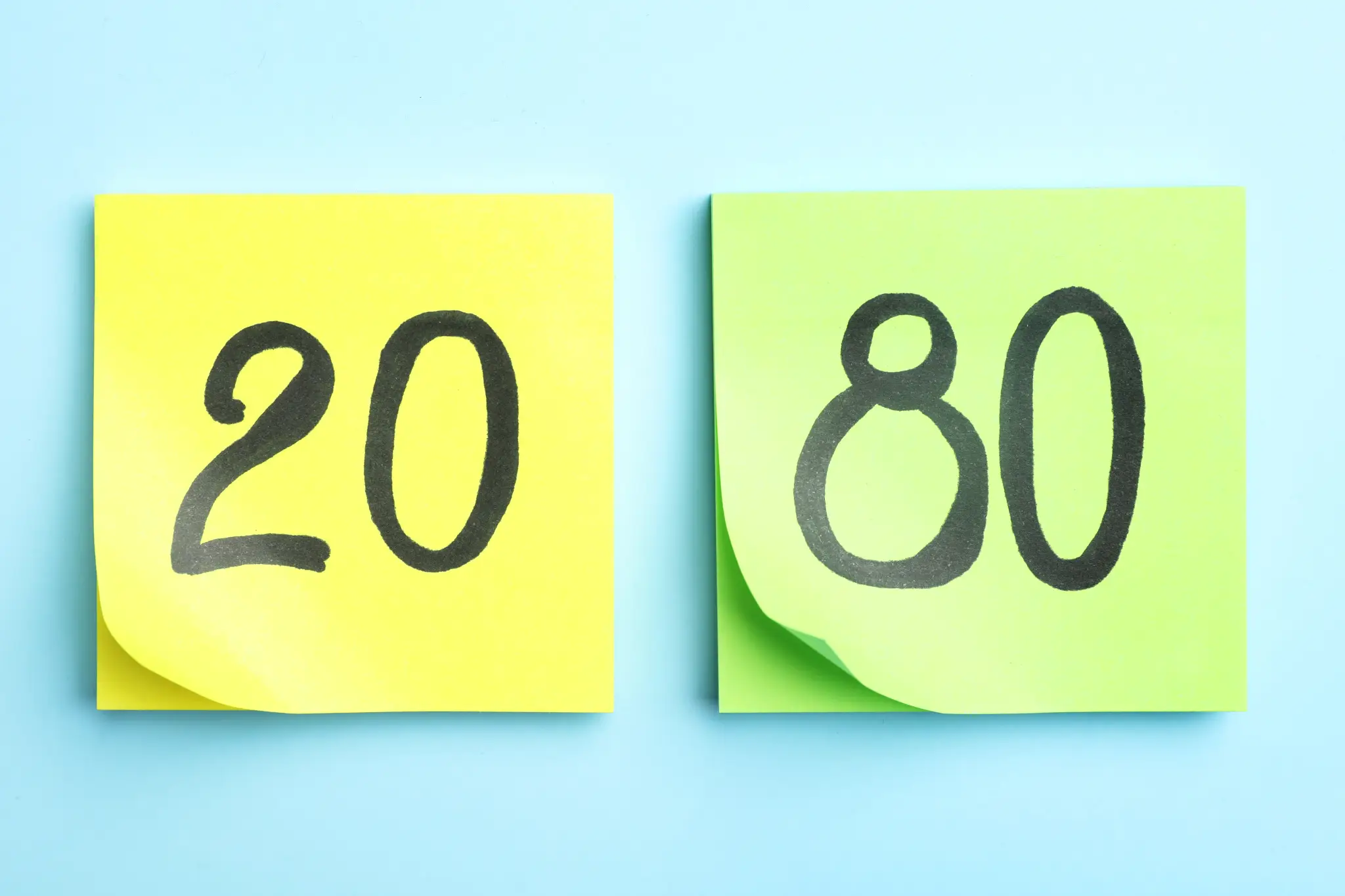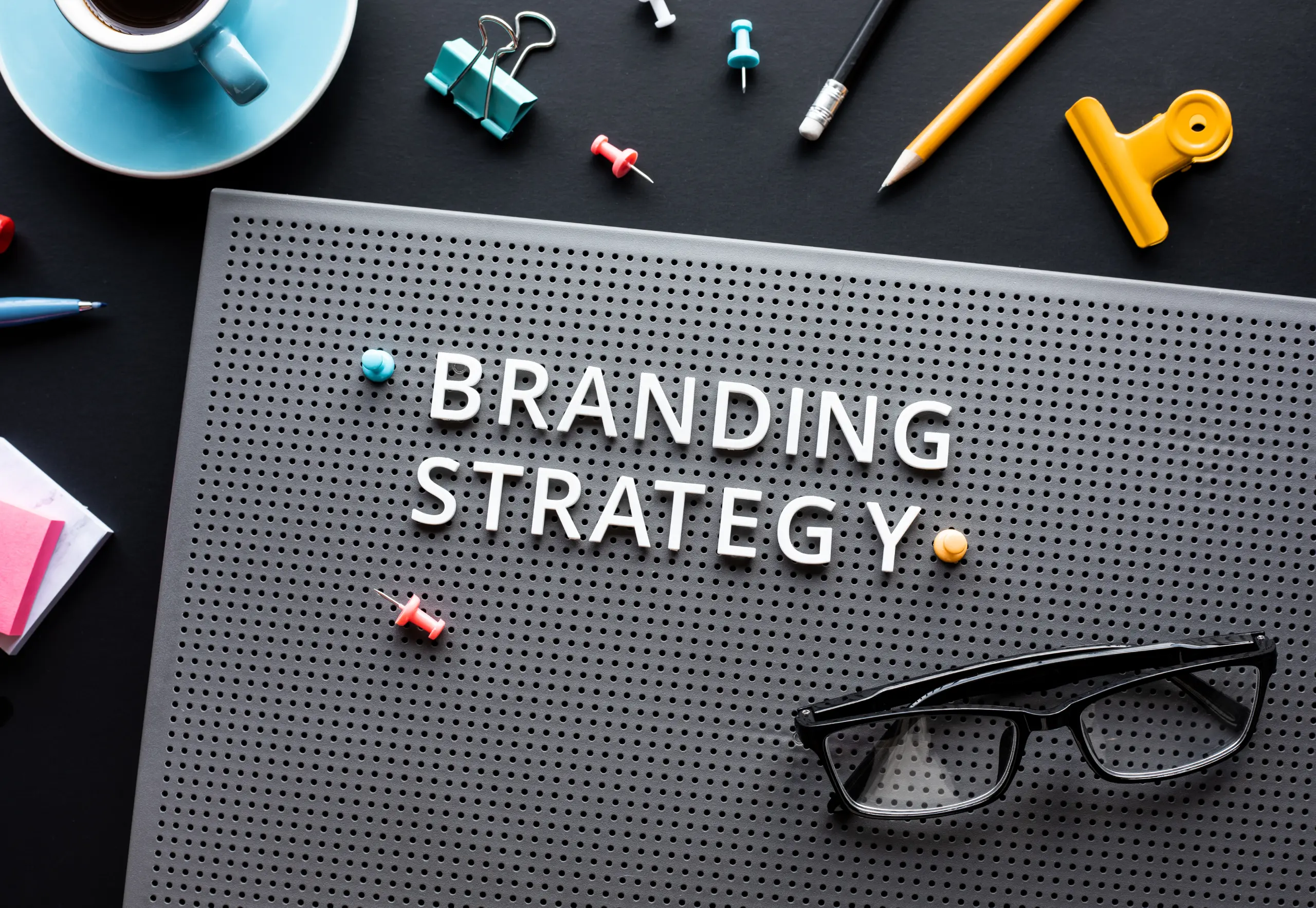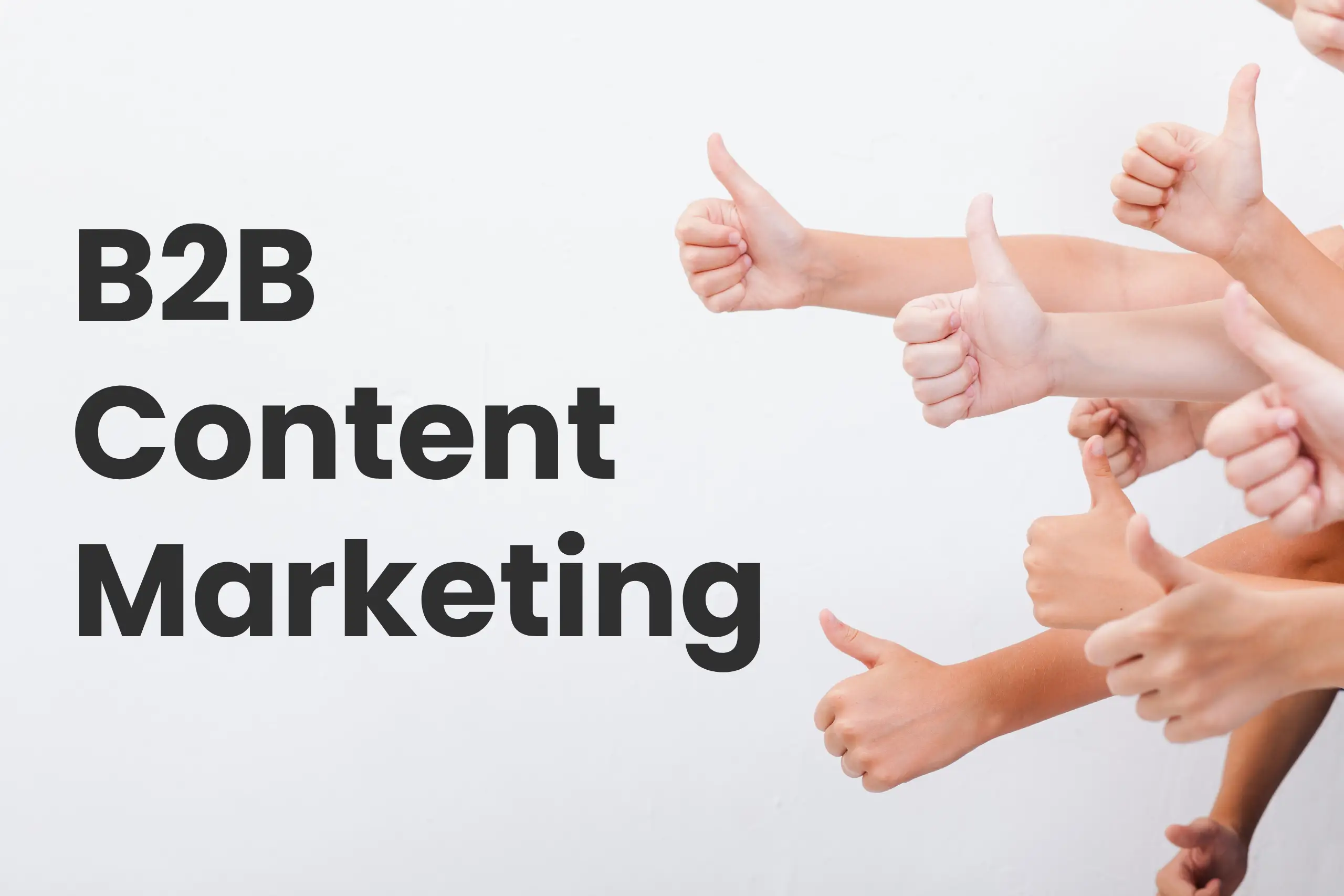What is Logo Design?
Logo design; It is the signature of a product, service or company. The logo, which is the most important element of the corporate identity system, is considered as the first step of branding and is the most important requirement in terms of recognization and reputation.

What is a Logotype?
Logotype, which is also known as “word mark”, means the design of a brand’s name as a logo. While providing integrity by visualizing the name of the company or brand, it facilitates the popularization of the name in the public and its integration with the brand identity, especially for newly established businesses or newly launched brands.

Although the use of the brand’s name in the logotype is an important limitation for the creativity of the designer, it may not be effective enough in terms of providing integrity or recognization if it is not directly related to the product or service offered by the brand. When it directly includes the product or the service offered, as in “Facebook”, a high level of recognization can be achieved with rapid acceptance by the public.
What is an Emblem?
Logomarks or emblems can often appear as a part of the logo or can be used as a stand-alone logo. When a strong brand identity is created and the brand does not need to use a logotype, the emblem can act as a logo on its own and create a much more effective process in terms of recognization.
A good and harmonious emblem creates a strong brand identity and allows the visual element to stand out and draw a strong image. Emblems also leave an unlimited creative space for the designer, allowing for more original and visually satisfying designs to emerge.
The use of emblems alone can cause chaos for brands that do not have a strong influence. Since it does not include the name of the brand, it will not provide any benefit to a newly established company in terms of recognition, and it may cause a process that is doomed to oblivion by becoming ordinary without people noticing the brand.

What is the Difference Between Logotype, Emblem and Logo Design?
- Logotype and emblem are half visual elements that can be used alone, while the logo is a whole that emerges by combining these two elements.
- A logotype consists of a name, not a symbol such as an emblem. While an emblem consists of only a symbol or letter, a logo is a design that includes both.
- The logotype consists of the name of the brand, while the emblem is an original design based on the product, service or brand. The emblem is a symbol that does not have to contain anything, and is left entirely to creativity. Any element whose meaning is important to the company or has a story can be used for the name of the brand.
- Although the logo includes emblem and logotype designs, as the branding is completed and recognization increases, the logotype remains in the background and only the emblem becomes strong enough to express the whole brand.
- Starting with only the logotype may carry risky elements such as starting with only the emblem. However, when the entire logo is determined and used, it can become a great advantage, especially for new companys.
- Logo designs usually reflect the actual lettering taken from the letraset catalog. In logotype, on the other hand, a new graphical arrangement can be created by redesigning the characters.
History of the Logo
People have used various ways to express themselves since their existence. Even hundreds or even thousands of years ago, the logo design and the existence and daily use of the emblem used with the logo can be mentioned. Throughout the recorded history, symbolic design studies have been carried out in countless different ways.
The history of logo design is parallel with ancient family crests, hieroglyphs and symbolism. Cave paintings made in various parts of the world between 70,000 BC and 7000 BC forms the basis of graphic art. Afterwards, the designs that symbolize different beliefs and ideas by many ancient civilizations were carried into daily life, and the patterns and graphic designs we see on the ruins today began to be created. In every period of history, people have provided awareness, institutionalization and integration by expressing themselves and their culture with symbols and pictures.
With the hieroglyphs developed in Ancient Egypt from 4000 BC, the images and sounds that exist in nature have become tangible and expressible. With the grid system developed in Egypt, the designs have been mathematically sized and made easy to reproduce. This development is one of the foundations of logo design. Thanks to this system, the ratios can be calculated and the same design can be made repeatedly. In the same period, calligraphy, which developed in China, became the basis for the symbolization of sounds and images, like hieroglyphs, and the development of languages. At the same time, the production of these symbols became artistic and brought a new order. In these ancient times, which followed processes such as the development of painting and sculpture art and the invention of writing, people realized that visual art would reach larger masses.

Logo Design from Past to Present
The first versions of the logo began to be used on signs and seals in the Middle Ages. In addition, the fact that civilizations have their own coats of arms in wars makes it easier to distinguish between friend and foe, while standing on one side also develops the idea of owning the coat of arms of that side. The foundations of branding, of making a brand visible by being liked by people, started with the arms.
In medieval Europe, the illiteracy of anyone other than the Aristocracy led to seeking other ways to express the service given to the people. Thus, different symbols were produced for each shop or service, and these symbols became universal over time. Even today, in a country where we do not speak the language, we can recognize the places that serve such as barber shops or pharmacies and hospitals by their symbols.
As a result of different needs, the symbols used in the product packages to give information about the product became their brands. Now, people have started to develop sympathy for the colors or symbol of the brand they love by remembering the product with its brand, not its name.
After the industrial revolution, thanks to the developing advertising industry, the industry has progressed rapidly with the development of logos, emblems and fonts suitable for today’s conditions. With the spread of logos and emblems, the development of typography has accelerated by creating decorative and subjective fonts by going beyond the traditional, plain font. The advertising industry, which progressed in parallel with commercial development, also contributed to the expansion of the graphic design market.
Nowadays logo design; It is the signature of a product, service or company. The logo, which is the most important element of the corporate identity system, is considered as the first step of branding and has become an indispensable requirement in terms of awareness and reputation.
What Does a Logo Mean for Companies? Why Do We Need Logo Design?
Logo design is the visual signature of a company, product or service that contains the meaning or definition.
A logo is needed because the fastest and shortest way to reach the target audience is to use visual elements. Content described in words or in writing has a very long impact time and a very short time to be effective. However, a visual element, such as a logo, has a very short impact time and an unlimited time to be effective.
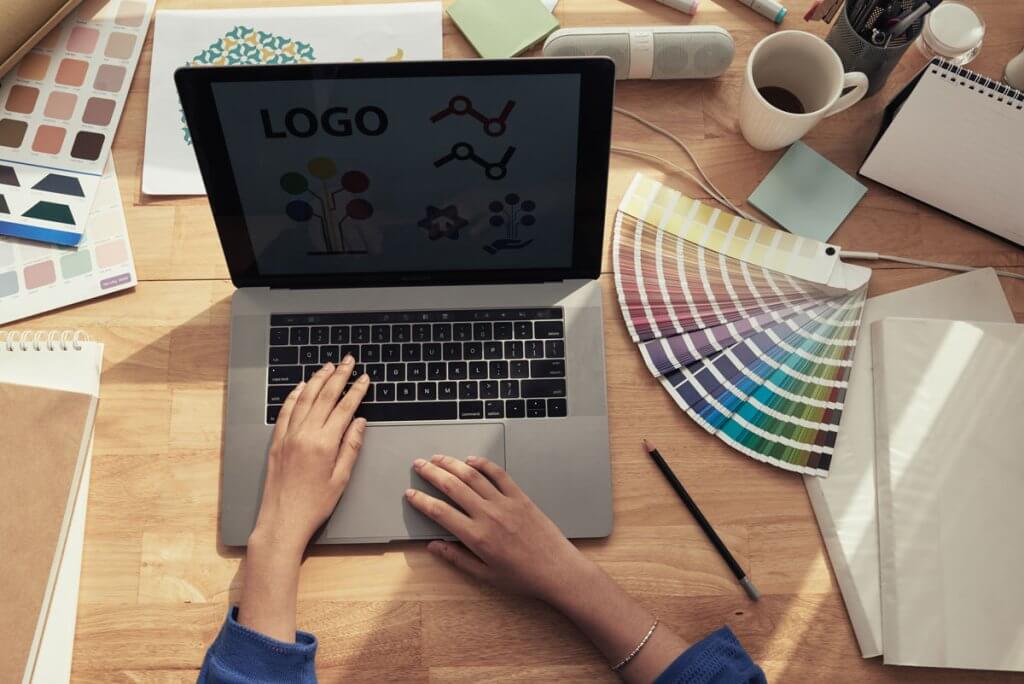
The time people have today is not enough to read and understand or to listen and decide. For this reason, visual elements that they can perceive by just looking at them and enable them to make a quick decision create an advantageous situation.
The logo, which is the most important and actually the easiest element of corporate advertising, provides a company with superiority in the field of public relations and ensures the creation of an understandable and catchy visual memory by preserving the integrity of the company.
Where and How Should the Logo Be Used?
- On web pages: Having a web page is the most important step to exist in the digital world after the need for a logo is met. The fastest way to spread the offered product, service or brand is to have an online presence. The brand, which is presented with the logo in all relevant areas created in the online environment, will gain great awareness in a short time.
- In business cards: While a business card designed with a professionally prepared logo will successfully represent the brand and the person, it will be an important source of power in terms of both promotion and prestige in event environments such as conferences and meetings.

- In packaging: The colors and fonts used in the products offered by the brand should also provide integrity with the brand’s corporate identity. The most important element of the whole design is the logo. The presence of the brand that produces the packaging will make a difference in reliability and awareness, as well as make the packaging design more harmonious and stylish. In some cases where the product gets ahead of the brand, the logo on the product will make a great contribution to the development of the brand and will bring great benefits to the organization at the marketing stage.
- In Online Documents: Using the logo in a clear and understandable way as on the web page in every field that exists online, such as e-mails, social media covers, adwords ads, ensures that customers or business partners are familiar with the brand.
- In Events: The logo is the biggest advertising tool in printed materials used in event areas such as stands, posters, banners, brochures. Logos used to attract the target audience by giving short but sufficient information about the brand make the brand visible as a competitive advantage in such crowded environments.
- Other Areas: The use of the logo on all products and services in which the brand exists or has a presence in printed or digital media is an extension of a correct marketing strategy.
What are the Points to Consider When Choosing a Font?
The font, which is an integral part of the logo design, has the power to change the fate of the brand when chosen correctly. When the brand’s awareness gets ahead of the font, the font starts to be mentioned with the name of that brand and this provides a great advertising advantage for the brand.
While creating a brand, designing a logo, choosing a font, and making designs such as posters and banners, the most important rule should be “simplicity”. The advice of all design instructors and expert graphic designers is for a simple and understandable design. In this case, the legibility and plainness of the font to be used in the logo – and other corporate identity elements – is more important than the authenticity. A logo designed with an unreadable font will create a very negative atmosphere first in terms of trust and then in terms of reputation. Regardless of the font used, the thickness of the font should be the same on average. In order to design an accurate and uncluttered logo on digital and printing materials, a plain and technically correct size should be preferred by avoiding excessively thick or very thin sizes.
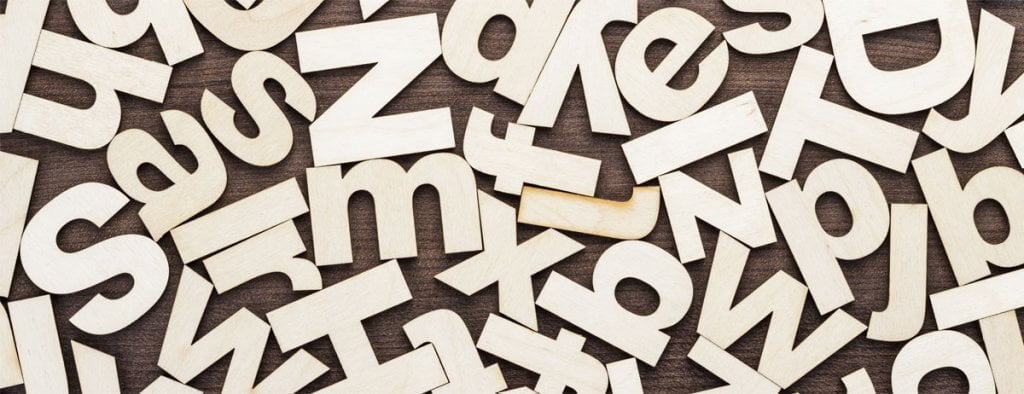
Features of the Font Used in the Logo
- Simple: The logo designed with a plain and easy font will be advantageous in terms of its application and reproduction on products and services. It should be smoothly adjustable when applied to large or small items.
- Impressive: Which font is used by successful competitor brands is an important resource to be analyzed. It is an issue that needs to be investigated not to imitate or vice versa, but to understand how effective the font used in achieving success is.
- Compatible: The use of a curved, ornate and illegible font for a brand that has a presence in the digital space and provides digital services does not inspire confidence. At this point, when choosing a font, its compatibility with the work done should prevent the feeling of appreciation and a more professional point of view should be captured.
- Plain: The use of multiple fonts in the logo, other corporate identity elements and even on the web page will create an unstable image and may adversely affect the credibility of the brand. When industry research is done, it can be seen that large and reputable companies are moving forward with a single font, while small companies are trying to support their efforts to exist with more than one font.
- Original: Fonts that are seen everywhere and that have proven their existence do not have a special meaning for the brand. It should be taken into account that the fonts that are popular at the time may not be used at all after a while and that falling into popular trends may become a disadvantage for a long-term company. For this reason, an infrequently used font can be selected during the selection of the most suitable font for the brand.
Logo Design Process
- Understanding why a logo is needed: The logo is the starting point of the first impression you want to create for the brand. The logo is the only element that represents the brand at the point where customers first see and make their first impressions about the brand. It should be ensured that such an important item has a suitable and effective representation ability for the brand. The presence of a good logo provides a great advantage in the sectoral competitive environment.
- Defining the brand identity: Before proceeding to the design phase of the logo, the identity of the brand must be fully determined and understood. A well-explained brand identity helps the brand stand out by creating a unique identity by increasing creativity and originality during the design of the logo.
- Finding inspiration or starting point for the design: The hardest part of logo design is probably finding a starting point. By gathering many different ideas in a basket and blending them with the wishes of the target audience, that is, with the ideas that are interesting for the customers, analysis and discussion can be completed and certain ideas for design can be collected.
- Analysis of competitors: Not only in logo design, but also in every stage and every product from the establishment of a company, the paths followed by rival companies should be reviewed, and their successes and failures should be analyzed.
- Determining the design style: Just like the fonts make different associations, the drawing styles of the logos create different meanings and appeal to different audiences. At this stage, the most appropriate design style should be determined by considering the identity of the brand.
- Finding the right logo type: Choosing and applying the most appropriate logo forms of different types such as monogram, logotype, emblem, abstract logo is of great importance in terms of creating integrity with the brand.
- Choosing colors: Colors have different meanings in different areas. Although each sector has its own color scale, going out of the colors of the sector does not always lead to bad results. The logo, which has a different but creative design, can be successful even if it does not meet the color criteria. Design can be made by considering the sectoral or emotional meanings of the colors or by choosing different colors that are compatible with the brand. In addition to the main colors to be used in the logo, the complementary colors specified in the corporate identity should not contradict the integrity of the brand.
- Determination of the font: First of all, the design strategy is determined by choosing one of the basic font categories consisting of the main headings such as Serif, Sans Serif, Script and Display. Then, the main and auxiliary fonts to be used specifically can be determined.
- Customization of the design: After the logo design is prepared as a draft, the logo takes its final form with the addition of customer or brand-specific details as a result of the information exchange between the designer and the customer.
- Combining the design with the brand: After the logo design is completed, the basis of the brand’s logo is formed by determining the way it is applied to the printed and digital elements.
How to Design a Logo?
Inspiration
Every experience gained in daily life can be a source of inspiration while designing. However, in the absence of inspiration, it may be useful to visit sites that host large communities that share in areas such as logo design or graphic design, digital arts.
Information
Process
Although logo design processes seem to be generally the same, each designer has a process that he creates or follows in connection with his own calendar and personal pace. For this reason, the designer’s creation of his own process by analyzing his own truths and measurements will enable the design phase to progress faster and easier. The general part of this process consists of the following elements:
- Identification: Accurate and complete perception of the received brief.
- Research: Searching for references that match the specified characteristics and trends.
- Development-Design: Revealing the draft versions of the logo in the light of the collected information.
- Revision: Revising and finalizing the draft logos submitted to the customer.
- Delivery: Completion and delivery of designs within the appropriate time

Pricing
Pricing of designs is purely subjective. Variables such as the designer’s work process, the nature of the work, the customer’s wishes, and the materials used need to be examined and detailed. It is not possible to talk about a single price for logo design, and it is not appropriate to offer the same price to every customer who wants similar works.
What Should Be Considered While Making Logo Design?
- The number of concepts used in logos should be limited. As the number of concepts increases, intelligibility and retention in mind decrease.
- The logo should provide information about the brand, but short and descriptive information should be chosen, not long and detailed information.
- Using a maximum of two colors while designing a logo will make the logo appear simpler and cleaner when creating alternatives and adjusting the print size.
- Logos should be used without any problems with all kinds of printing and cutting techniques, details should not be lost in very small dimensions.
- Logos should be designed in a vector application such as Adobe Illustrator, not Photoshop! This is because the logo needs to be scalable without losing quality. It should be clear regardless of whether it’s printed on a small business card or a giant billboard.
- Your logo will be reproduced in a variety of sizes and may need to be as small as a postage stamp to fit stationery. Make sure the text and fine lines are still readable when the logo design is scaled down.
- While it’s good to experiment with colors, it’s best to keep a limited color palette if possible. Indicate corporate colors with CMYK or Pantone references to ensure accurate color reproduction after the logo is printed.
Color Selection in Logo Design
While designing a logo, the color chosen should not appeal to the sense of taste, but to the commercial reputation and productivity. Therefore, when choosing a color for the logo, first of all, the most used colors in the sector should be investigated and their success rates should be analyzed.
After ensuring the sectoral harmony of the color or colors to be used in the logo, the harmony with the brand, product or service should be ensured. Apart from these, personal preferences and subjective tastes can be taken into consideration.
The color must be verified from the Pantone catalog in order to ensure the continuity of the selected color and its use in all areas, including printing.

- Blue: Reliable, calm, plain. The most commonly used color among corporate colors is blue. It is frequently used by financial institutions and online companies.
- Black: Sophisticated, luxurious, elegant. It is the color used in more luxurious and serious areas, generally aiming to appeal to a certain segment. It is a risky color as well as a striking one. While an elite look is desired, a cold and distant image can also be drawn.
- Red: Courage, excitement, power. It is a color that is widely used to attract attention. It creates an image that is stylish like black, familiar like white and stronger than other colours.
- Yellow: Optimistic, creative, warm. It is used by complementing or supplementing with another color rather than being used alone. It is easily accepted, generating a warm and sympathetic interest.
- Orange: Energetic, happy, social. Although it has a remarkable perception like red, it also has all the features of yellow. Warmer than red, stronger than yellow.
- Green: Nature, refreshment, harmony. It is used by brands that want to emphasize the environment as a relaxing and environmentally friendly color.
- Purple: Showy, mysterious, creative. Purple, which is mostly used to make a flashy and elite emphasize, is one of the colors that attract the attention of children and women.
- Pink: delicate, feminine, romantic. Pink, which is thought to symbolize women, is the color most used by brands that produce or serve women.
- Multi: Fun, kid, versatile. Logos with more than two colors preferred by versatile and comprehensive brands carry a fun and interesting reflection.
What is Pantone Color? What is CMYK? What is RGB?
Pantone Limited Company, founded in 1962 in New Jersey, is a company that provides services in the field of coloring such as paint, color, fabric, plastic. The company, which has a global color standard accepted around the world, has a system called Pantone Color Catalogue, in which the values of the colors and the way they are obtained are determined. Pantone Matching System (PMS), which is also used in logo design works, specifies unique colors and the values of colors to ensure print continuity and standard.
The CMYK process, which consists of the initials of Cyan, Magenta, Yellow, Key is a color printing method using four colors of ink. Most printed materials in the world are produced by this method, and there is a special subset of Pantone colors that can be reproduced using CMYK. CMYK color equivalents are also included in a brand’s corporate identity guide.
Many special colors such as metallic and fluorescents are also produced in the Pantone system.
In screen-based, that is, digital environments, colors are displayed in the RGB (red, green, blue) system. Based on the reflection of light, this color system determines the codes of all colors in nature by referring to these three basic colors. In the RGB system, when each color is mixed at 100%, white is obtained, and when mixed at 0%, black is obtained.
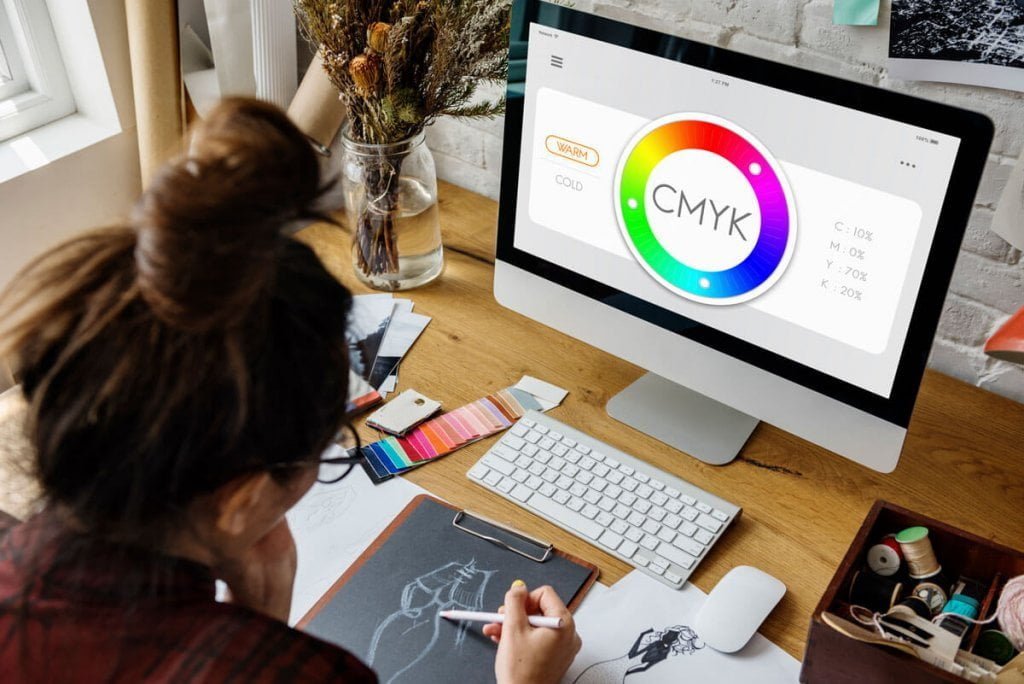
How to Design an Impressive Logo?
Your logo design allows your target audience to recognize and remember what kind of relationship they have with your brand and who you are. Your logo is one of the most important parts of your corporate identity; therefore it can be quite difficult to find the right design for your company. Your logo design should be visually striking and understandable. Not only that, it should also be a logo design that is “unique” and sets your company apart from the competition.
Of course, it is important to know which of the many colors, forms and fonts that can be used in logo design is suitable for your industry and company. Here are some tips that will help you not only design a logo, but also have an impressive and memorable logo:
Let Your Logo Tell the Message You Want to Give
What does your brand represent? Are you formal or do you have a friendly approach? Does your brand have a masculine or feminine feel? Maybe you have a general audience or cater to a more specific niche. Whatever your brand represents, it’s important to make sure your company logo accurately conveys and represents its message.
* A little tip: Look at your competitors. This will not only help you discern the feeling that you are moving forward, but also help you understand how to stand in between.
Let Your Logo Have a Simple Design
If you want to express the message you want to give more clearly, you need to know that your logo design should be simple and plain. But what exactly does “simple and plain” mean? Your company’s logo design should not be an element to make your fancy design dreams come true; Complex graphics are not used in successful logo designs. Remember, you just need to be noticed and remembered.
Your logo should fit your purpose. Your logo design doesn’t have to describe every single service provided by your company. Focusing your logo design on the core service your company provides will help create a simpler design.
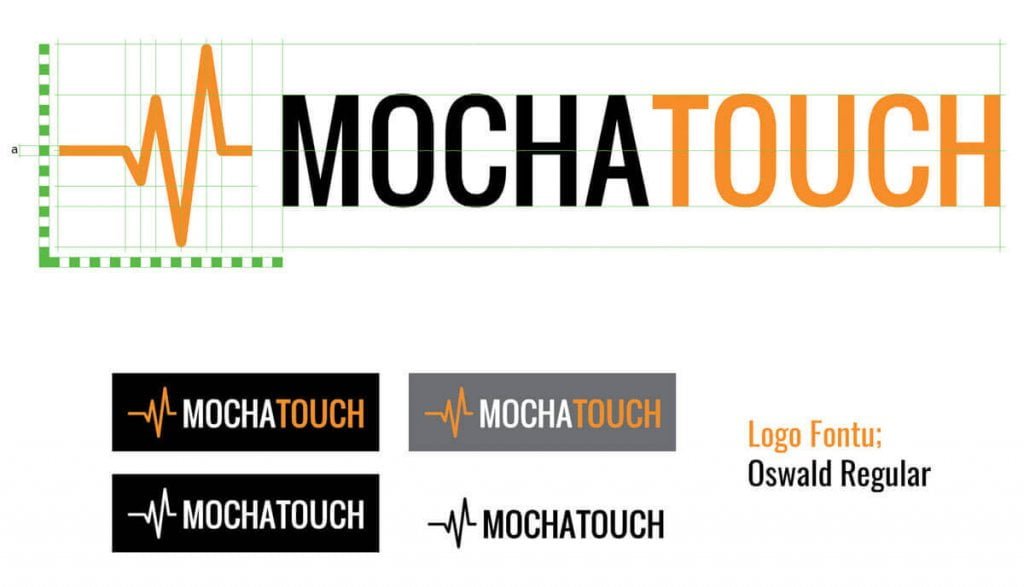
- Let The Colors You Choose Be Appropriate For Your Industry
Color not only triggers subconscious reactions in a person, but is perceived differently depending on each individual. That’s why it’s absolutely essential to know how you want to be perceived as a brand. Knowing this will allow you to appeal to the preferences of your target audience. For example, colors like green and blue give a sense of serenity, while warmer colors like red or orange have a bold or confident statement.
* Another little tip: be careful with the number of colors you use. The number of colors in the logo design should not exceed 2 or 3.
Choose Typography to Represent Your Brand
Different typographies have different feelings and energies, just like different colors. You must choose the font you will use in your logo design according to the stance your brand represents.
For example, a font you choose from the sans-serif group consisting of rounded lines creates a more fun and friendly feeling. This set of fonts is probably not suitable for a medical practice or a law firm. The right font will give your audience an insight into your brand’s message, so make sure you choose it carefully.
Let Your Logo Be Suitable for Different Uses
When designing your logo, remember that it won’t live on your screen forever. In a brochure, at the top of a web page, or on a sign; Does it still look good to your eyes? Being scalable and adaptable to different backgrounds are things you should consider. Complex designs will not suit different backgrounds and different spaces.
Logotype, which is also known as “word mark”, means the design of a brand’s name as a logo. While providing integrity by visualizing the name of the company or brand, it facilitates the popularization of the name in the public and its integration with the brand identity, especially for newly established businesses or newly launched brands.
- Identification: Accurate and complete perception of the received brief.
- Research: Searching for references that match the specified characteristics and trends.
- Development-Design: Revealing the draft versions of the logo in the light of the collected information.
- Revision: Revising and finalizing the draft logos submitted to the customer.
- Delivery: Completion and delivery of designs within the appropriate time
Your logo design allows your target audience to recognize and remember what kind of relationship they have with your brand and who you are. Your logo is one of the most important parts of your corporate identity; therefore it can be quite difficult to find the right design for your company. Your logo design should be visually striking and understandable. Not only that, it should also be a logo design that is “unique” and sets your company apart from the competition.
